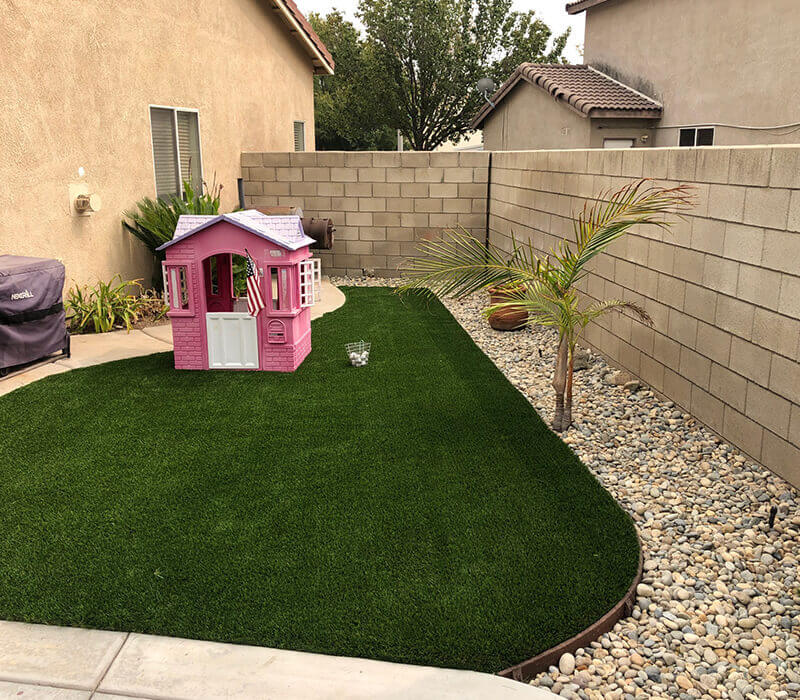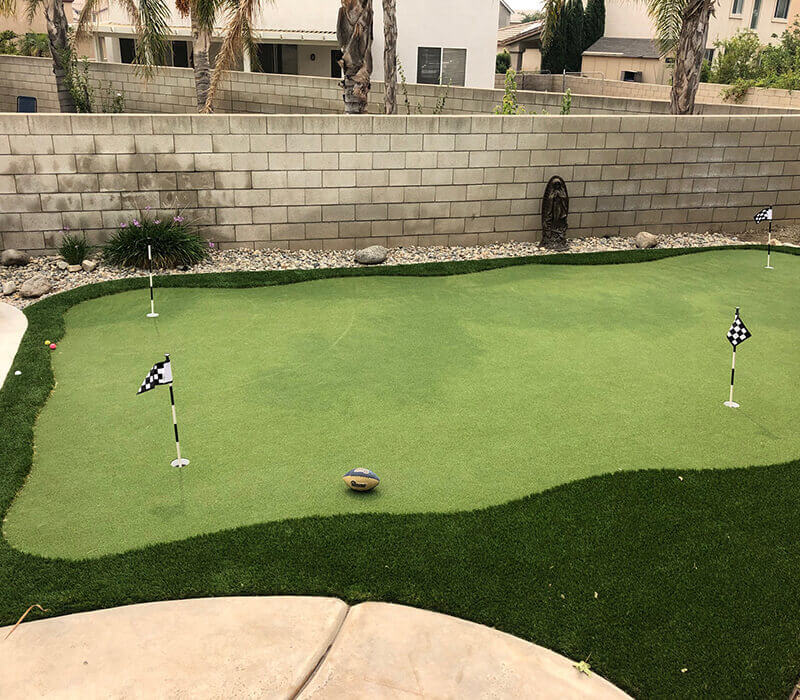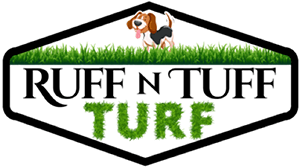The debate between natural grass and artificial turf has been going on for some time. While both options have benefits, there are some environmental factors to consider when determining which is better for the environment. Artificial turf has several advantages, requiring less water and maintenance than natural grass. However, there are some environmental impacts to consider when making a decision. This paper will discuss the environmental impacts of artificial turf versus natural grass, including the effects of chemical components, water usage, and air pollution.
Carbon Footprint
When it comes to producing artificial turf, the process involves manufacturing and installing the turf and the power and resources used to transport and maintain it. As a result, artificial turf generally has a higher carbon footprint than natural grass due to the emissions associated with the turf’s production, installation, and maintenance.
In comparison, natural grass does not require the same level of manufacturing and installation, and the resources used for its upkeep are generally lower. As such, natural grass typically has a lower carbon footprint than artificial turf. However, natural grass requires chemical fertilizers and pesticides, which can contribute to GHG emissions if not managed properly.
Overall, the environmental impact of artificial turf versus natural grass depends on the specific application and the resources used in production and maintenance. A comprehensive carbon footprint analysis can provide valuable insights into the relative impacts of each option.
Water Usage
The water usage for artificial turf is much lower than that for natural grass. Artificial turf does not require irrigation and does not need to be mowed, which is why it is a more sustainable choice in terms of water usage. Artificial turf also has a much lower requirement for fertilizers, pesticides, and herbicides, reducing water usage.
In contrast, natural grass requires frequent watering and mowing and the need for fertilizers, pesticides, and herbicides. This can lead to the runoff of these chemicals into nearby rivers, streams, and lakes, which can have a negative environmental impact. Natural grass also requires more frequent replacement when it becomes damaged or worn out, which further impacts water usage. Therefore, artificial turf is the more sustainable choice regarding water usage.

Fertilizers and Pesticides
Artificial turf does not require fertilizers for maintenance. Natural grass needs to be fertilized regularly to maintain a healthy, lush appearance. Fertilizers used on natural grass can have significant environmental impacts. Fertilizers are made of nitrogen, phosphorus, and potassium, which are necessary for plant growth. However, if they are over-applied, they can cause runoff into nearby streams, rivers, and lakes. This runoff can lead to algae growth and an overall decrease in water quality.
Artificial turf does not require the use of any pesticides. Natural grass, however, is susceptible to many pests, including insects, weeds, and diseases. As a result, pesticides are often used to protect the grass from these threats. Pesticides can leach into the soil and groundwater, leading to contamination and adverse environmental impacts.
Heat Island Effect
The heat island effect can have a significant environmental impact on both natural grass and artificial turf. Natural grass can suffer from increased surface temperatures, leading to increased water evaporation, energy use for cooling, and air pollution. Artificial turf can also suffer from increased surface temperatures, leading to increased heat transfer to the underlying soil and increased material degradation. In addition, the lack of vegetation and water in artificial turf can lead to greater concentrations of air pollutants and higher surface temperatures.
The heat island effect is a major environmental concern and should be considered when using artificial turf or natural grass in any urban area. Using natural grass can help reduce the heat island effect by providing shade, cooling the air through transpiration, and reducing the energy needed for cooling. Artificial turf, on the other hand, has less of an impact on the heat island effect due to its lack of vegetation and water, but it can still contribute to increased air pollution and surface temperatures.
Wildlife Habitat
A well-designed wildlife habitat in a natural grass setting can provide a variety of food sources, shelter, and nesting areas for a wide range of species. This can include native plants, shrubs, trees, and grasses that provide food and shelter to birds, mammals, reptiles, and insects. Ground-dwelling mammals, such as rabbits and voles, can find shelter among the grasses and plants, while birds can roost and nest in the trees and shrubs. Additionally, insects and other invertebrates will benefit from the variety of food sources that the plants and grasses offer, such as nectar, pollen, and seeds.
Creating a wildlife habitat in a natural grass setting doesn’t have to be complicated or expensive. Even small changes, such as reducing mowing frequency or leaving areas of the lawn uncut, can make a huge difference in providing habitat for wildlife. Additionally, adding native plants and grasses to an existing lawn can provide additional food and shelter for wildlife while also helping to reduce water and fertilizer use. With a few simple changes, a lawn can be transformed into a flourishing wildlife habitat that provides a home to various species.
Pollutants
When it comes to the environmental impact of artificial turf versus natural grass, there is a lot to consider. One of the most important factors is the type of pollutants released into the environment. Natural grass has been used for centuries as a natural source of oxygen and carbon dioxide. However, artificial turf can release various environmental pollutants, including volatile organic compounds (VOCs), heavy metals, and synthetic fibers.
VOCs are a major concern when it comes to artificial turf. These compounds are released into the atmosphere as the turf breaks down and can be inhaled by people, animals, and plants. VOCs can cause various health problems, including headaches, nausea, and respiratory irritation.
Heavy metals can also be released from artificial turf and pose a serious health risk. Cadmium, chromium, and lead are just a few metals found in artificial turf and can cause serious health problems if inhaled or ingested.
Synthetic fibers, such as nylon and polyester, are released into the environment when artificial turf breaks down. The fibers can be inhaled, ingested, or absorbed through the skin, leading to various health problems.
In comparison, natural grass releases various beneficial compounds into the environment, such as oxygen and carbon dioxide. It also does not release harmful pollutants into the atmosphere, making it a much safer option for the environment.
Pollen
The presence of pollen on artificial turf can be problematic because it can trigger allergies and create a health hazard for athletes and others who use the field. It can also lead to an accumulation of debris, which can interfere with the performance of the turf and make it more difficult to maintain. Pollen can also be a problem for natural grass fields. Pollen can settle on the grass blades and become trapped, preventing water and nutrients from reaching the roots. This can lead to an unhealthy lawn and make the field more prone to weeds and pests.
The best way to reduce the impact of pollen on both artificial turf and natural grass fields is to clean the surface regularly. This can be done by using a leaf blower or a power washer. Additionally, mowing the grass regularly and removing dead grass clippings can help reduce the amount of pollen on the field. Overall, pollen is an important element to consider when discussing the environmental impacts of artificial turf versus natural grass. Although it is not always the first thing that comes to mind, it is still a factor that should be considered. Regular maintenance of both fields can help reduce pollen’s impact and keep the field in optimal condition.

Final Thoughts
Overall, the environmental impacts of artificial turf and natural grass are quite different. Artificial turf has fewer maintenance needs, uses fewer resources, and has less soil degradation. However, it does require a significant amount of energy to produce and could potentially leach toxic chemicals into the environment. Natural grass does require more maintenance, is more costly, and has greater soil degradation, but it does provide valuable ecosystem services such as habitat for wildlife and air filtration. Ultimately, the choice of which turf to install should be made based on the location’s individual needs and its environment.
We at Ruff N Tuff Turf believe that our product is the best choice when comparing the environmental impact of artificial turf and natural grass. Our turf is made of recycled materials, provides years of use with minimal maintenance, and has a low environmental footprint. We are proud to provide a product that helps to reduce the amount of water, energy, and resources needed to keep a lawn looking beautiful. Our turf is the best choice for providing a low-impact, long-term solution that is both environmentally responsible and aesthetically pleasing.


